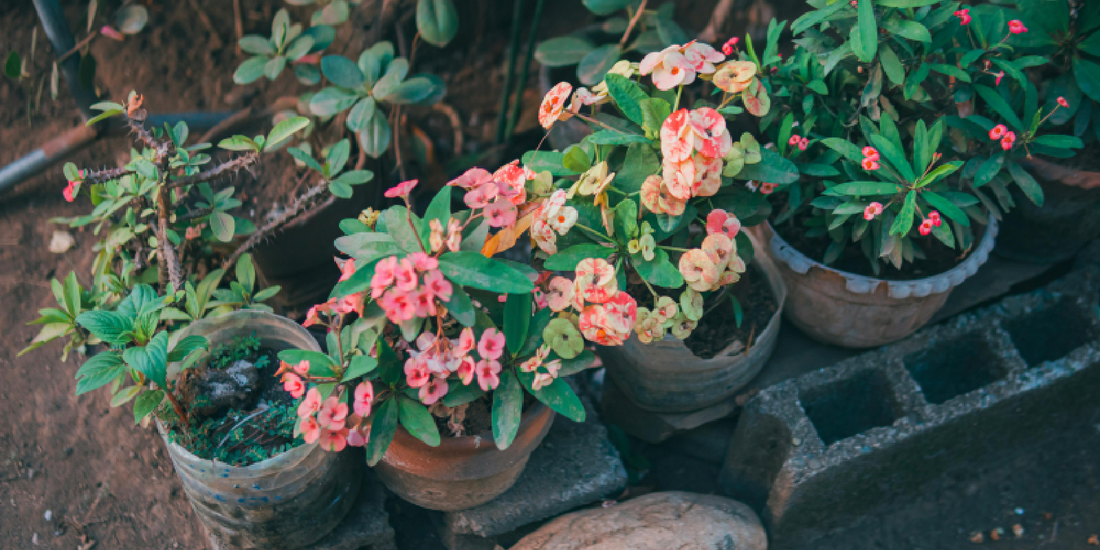
Layering Techniques for Tiered Plant Stands
Share
Indoor gardening is not only about keeping plants alive; it’s about designing a vibrant and balanced ecosystem that complements your interior. One of the best ways to achieve this harmony is through layering, a technique that brings depth, rhythm, and sophistication to plant arrangements. Tiered stands, with their multiple levels, provide the perfect structure for layering.
At amoyls, we designed the VerdantGlow S-Shaped 8-Tier Plant Shelf with Grow Lights specifically to make layering intuitive. With its unique flowing shape and integrated lighting system, it transforms a simple collection of plants into an eye-catching, thriving display. This guide dives deep into layering strategies you can apply to any tiered plant stand—whether you are styling for your living room, home office, or a compact apartment corner.
Why Layering Matters for Indoor Plant Displays
When you walk into a well-designed garden, what captures your attention is not just the plants themselves but the way they are arranged. Layering achieves the same effect indoors.
Benefits of Layering:
- Visual depth: Instead of a flat wall of green, layers create a sense of foreground, middle ground, and background.
- Efficient use of space: Especially in apartments or offices, vertical layering maximizes greenery without crowding floors.
- Balanced exposure to light: With careful placement and the help of grow lights, each plant receives the light it needs.
- Artistic storytelling: Plants of varying heights, colors, and textures tell a story together, expressing your style.
Think of layering as painting with living materials. Each level of the stand is a brushstroke, and the combination becomes your personal masterpiece.
Core Principles of Effective Layering
1. Proportion and Scale
Balance is key. Place tall plants like bird of paradise or snake plants on top tiers or towards the back, then layer progressively smaller species downward.
2. Contrast in Form
Pair large, bold foliage (Monstera deliciosa) with delicate trailing vines (string of pearls). The juxtaposition enhances visual drama.
3. Texture Diversity
Mix shiny, leathery leaves with matte, feathery ferns. Combining textures avoids monotony.
4. Rhythm and Repetition
Repeating similar plant types or colors creates cohesion, while subtle variation keeps it interesting.
5. Lighting Integration
If lower tiers lack sunlight, use artificial grow lights. The VerdantGlow’s built-in system ensures consistent illumination.
Practical Layering Techniques for Tiered Stands
The Cascading Approach
- Top tiers: Place upright statement plants.
- Middle tiers: Add medium-sized species like calatheas.
- Lower tiers: Fill with compact succulents or flowering plants.
- Trailing plants: Let ivy or pothos spill over edges for flow.
The Framing Technique
Frame the structure with wide-leaved plants, then fill the inner shelves with colorful accents.
The Seasonal Rotation
Rotate flowering plants or herbs based on the season. In spring, add orchids; in autumn, chrysanthemums. Seasonal change keeps the display lively.
The Accent Pop
Use one brightly colored species per tier—like bromeliads or coleus—as a visual anchor against a background of greens.
The Balanced Symmetry
Mirror plant types on each side of the S-shape curve to achieve harmony while letting the middle tiers act as focal points.
Styling Inspiration With the amoyls VerdantGlow Stand
The VerdantGlow S-Shaped 8-Tier Plant Shelf with Grow Lights is more than a stand—it’s a design piece. Its flowing S-shape gives movement to the display, making layering more dynamic.
- Top tier: Tall centerpiece (e.g., rubber tree, fiddle-leaf fig).
- Upper middle: Trailing pothos paired with peace lilies.
- Lower middle: Herbs or compact foliage like peperomia.
- Bottom tiers: Succulents, bonsai, or African violets.
- Side curves: Asymmetrical placement of medium-sized plants to break uniformity.
- Grow lights: Adjustable to highlight each layer in evenings, doubling as ambient lighting.
This arrangement creates a “living sculpture” effect, turning the stand into functional art.
Plant Recommendations for Different Layers
- Tall plants (focal): Snake plant, dracaena, bird of paradise.
- Medium height (structure): ZZ plant, philodendron, calathea.
- Trailing (movement): Ivy, string of hearts, spider plant.
- Compact (base): Succulents, cacti, miniature ferns.
- Accent (pop of color): Orchids, bromeliads, flowering kalanchoe.
By combining these categories, you ensure every layer serves a role in the overall visual story.
Interior Styling Applications
Modern Living Room
Layered stands near windows create natural focal points. Use structured plants for a clean aesthetic.
Minimalist Studio
Stick to green-on-green layering with subtle textures—perfect for uncluttered spaces.
Bohemian Corner
Mix colorful foliage with vines for a wild, eclectic look.
Home Office
Layer air-purifying plants like peace lilies and snake plants for a functional yet stylish setup.
Small Balcony
Use herbs and compact plants layered on lower tiers, while flowering accents brighten upper tiers.
Common Mistakes to Avoid
- Overcrowding shelves – Plants need space to grow and breathe.
- Ignoring plant growth – A small plant today may overshadow its neighbors in six months.
- Flat color palettes – Using only green foliage can look dull; mix variegated leaves and blooms.
- Neglecting maintenance – Dead leaves or dusty foliage instantly break layering harmony.
- Poor pot selection – Bright or mismatched pots distract from the plants themselves.
Maintenance Tips for Long-Lasting Layered Displays
- Prune regularly to maintain structure.
- Dust leaves so they stay shiny and photosynthetically efficient.
- Rotate pots every few weeks for even growth.
- Reassess seasonally—swap tired plants with fresh additions.
- Monitor light balance—adjust grow light intensity as plants mature.
Why Integrated Grow Lights Are Essential
Layering works only if every tier receives enough light. Natural sunlight often falls short indoors, especially for bottom tiers.
The VerdantGlow S-Shaped Stand solves this problem with built-in grow lights, which:
- Ensure uniform light distribution.
- Highlight visual layering in the evening.
- Support plants that thrive poorly in shaded interiors.
- Reduce the stress of repositioning plants for light access.
Going Beyond: Layering as a Lifestyle
Layering isn’t only about design; it fosters a mindful lifestyle. Rearranging tiers seasonally, experimenting with textures, and observing growth patterns help you stay connected to nature even indoors. The stand becomes not just furniture, but a ritual of care.
By mastering layering techniques, you transform your space into a sanctuary that blends health, design, and emotional well-being.
Conclusion
Layering is the secret ingredient in creating visually stunning and healthy plant arrangements. By balancing proportion, contrast, texture, and lighting, anyone can achieve professional-looking results at home.
The amoyls VerdantGlow S-Shaped 8-Tier Plant Shelf with Grow Lights is designed to simplify this process—its flowing design and integrated lighting make it effortless to create breathtaking displays. Whether you are curating a minimalist studio or a lush bohemian corner, layering with the right stand turns your plants into living art.
